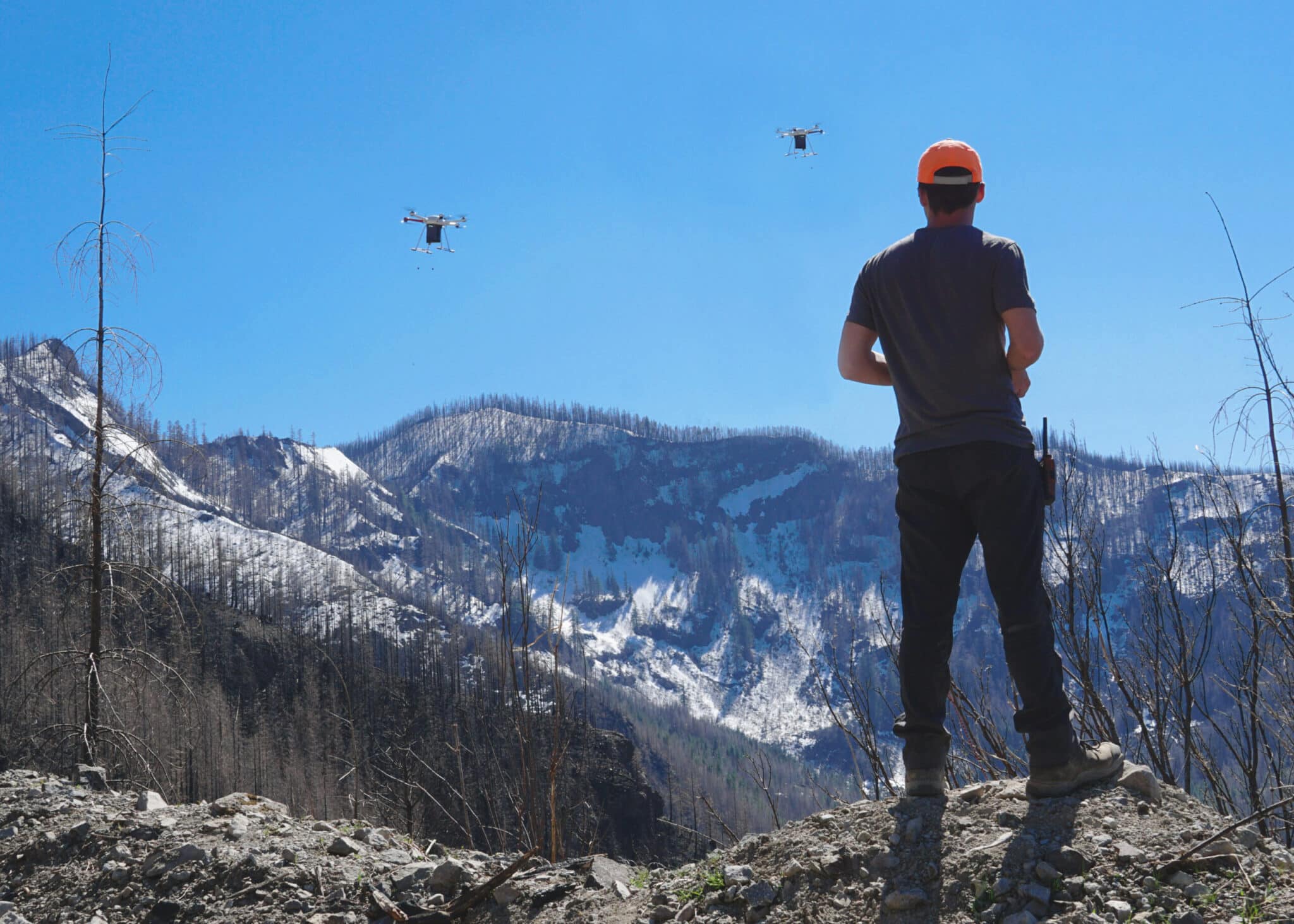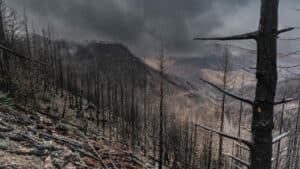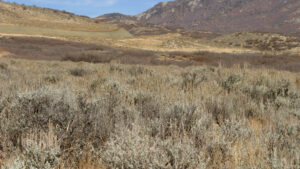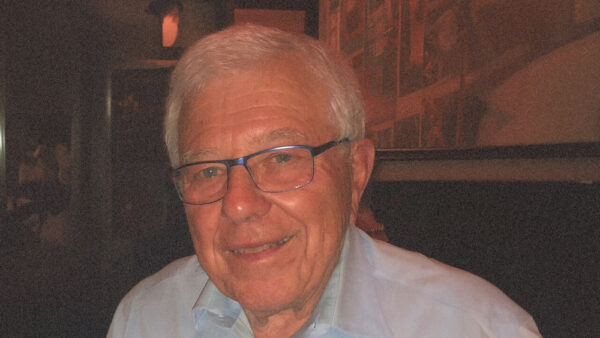Wildfire recovery efforts and reseeding are crucial for healthy ecosystems.
Wildfire is a natural and necessary part of western ecosystems, renewing and revitalizing native landscapes by clearing old brush, returning nutrients to the soil and stimulating plants to germinate.
While wildfires can be beneficial for ecosystems, the frequency and severity of these fires have increased in recent years.
From 2012 to 2021, an average of 61,289 wildfires occurred annually, with an average of 7.4 million acres affected. As of August 1, more than 39,000 wildfires have hit nearly 5.7 million acres, according to the Congressional Research Service.
“What we have today are wildfires that are behaving and acting and coming around more frequently than they have in the past. Much of the acreage in the western U.S. is part of some sort of sagebrush or other shrub and grass type ecosystem that is historically adapted to natural cycles of wildfire. In the past, sagebrush communities have seen those fires happen at intervals of 60 to 100 years,” explains Damon Winter, general manager of L&H Seeds, in an interview with Seed World. “In the present, where we have catastrophic wildfires with shortened cycles — in some places to as little as a three-to-five-year return interval of fire — we are seeing wildfires that are more intense and more frequent than a lot of these native plant communities are able to respond to.”
More intense heat and increased drought have required intervention from seed companies and government agencies following these fires to rebuild the destroyed ecosystems.
“In the past, fire could naturally cycle through an area and seeds stored in the soil would naturally revegetate the site. But now with these hotter, more frequent wildfires, this native seedbank in the soil is oftentimes compromised,” adds Winter. “In these cases, often the only returning vegetation are annual grass weeds that only perpetuate the issue. By going in and reseeding with native species, we can try to interrupt the weed establishment to return to a more natural fire return interval and get those systems functioning closer to the way they should.”
Reseeding is crucial and can provide extensive benefits for the surrounding ecosystem.
“Reforestation, whether through seeding or hand planting, or facilitating natural regeneration with existing seed banks, is critical for the long-term restoration of resilient forest ecosystems, which provide clean water, carbon sequestration, wildlife habitat, recreation and solitude, wood products, and a host of other benefits,” says a USDA Forest Service spokesperson.
New Technology Helps to Reseed
One form of technology that has been developed to help seed companies and government agencies reseed following these wildfires are drones.
Founded in 2016, DroneSeed is at the forefront of companies working to utilize drones for wildfire recovery efforts. The company’s mission is “to make reforestation scalable,” says Cassie Meigs, senior director of Client Solutions at DroneSeed.
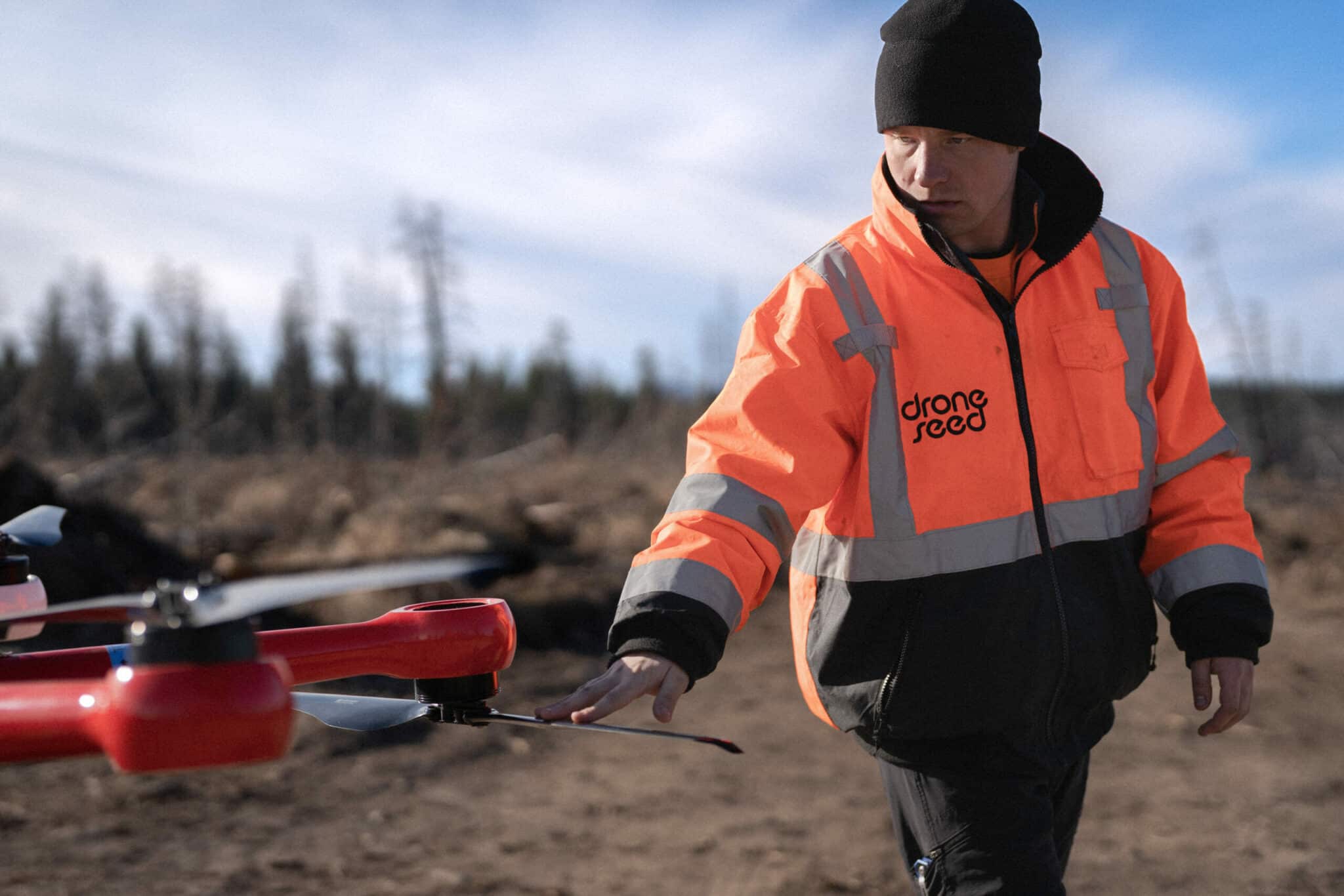
These aircrafts aren’t average drones. They’re around eight feet in diameter with a payload of up to 57 pounds. When loaded up, the drones weigh about 115 pounds. The drones are typically flown in a swarm configuration with anywhere from two to five aircrafts at a time. Each aircraft’s battery life falls between 8-18 minutes, depending on the terrain, wind speed and additional factors.
“With the drone, we’re able to stretch the seed supply in a big way. Historically, direct seeding was done by helicopter or planes that would drop pounds of seed per acre,” says Meigs. “With our technology, we’re able to stretch that seed supply. We’re intelligently dropping the seeds in the locations that they should be, encapsulating them and seed vessels, which enhance the probability of each seed germinating and growing on a landscape. It’s all about seed preservation and making that seed supply stretch over larger areas.”
Reseeding when it is not safe for human activity is a unique capability of drones. But why is it important to reseed during these dangerous conditions?
“If you think about it from a biological standpoint, the time when trees would be naturally masting and dropping their cones is that period after a fire. So, we’re just mimicking nature,” explains Meigs. “The best time to seed after a fire is the fall after a disturbance. That’s when seed and trees would be naturally dropping their cones, so we’re just mimicking that.”
One size doesn’t fit all for these complex drones, with different landscapes bringing varying needs.
“All of our aircrafts are preprogrammed. The first step is to survey the landscape. We use high resolution LiDAR and aerial imagery. We collect that data before any of our drone operations, so we really have a good idea of the landscape. We create exact 3D models of every twig, snag and standing tree that are located in the site … We use all that data to have an informed deployment of our seed,” adds Meigs.
While wildfires are not slowing down, seed companies and new technology could help return these systems to a more natural fire return interval.
Read More:
New Methodology Could Predict Soil Recovery After Wildfires
Post-Wildfire Restoration is a Team Effort that Starts with Native Plants
Urban Wildfire Reclamation: The Right Seed is Just the Start
Independent Seed Companies Cooperate in Wake of Paradise, California Wildfire


